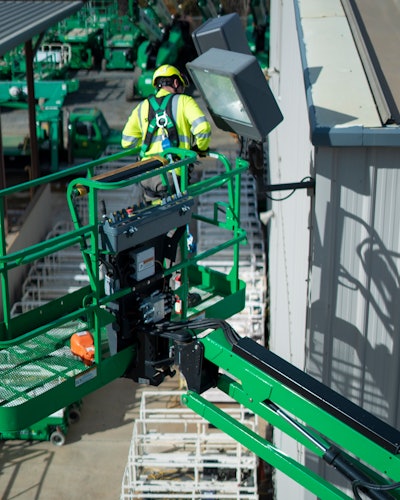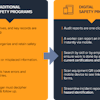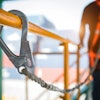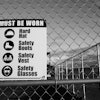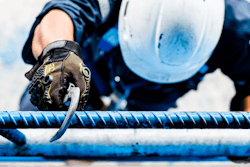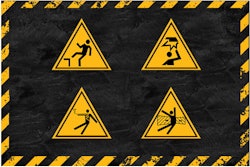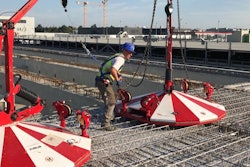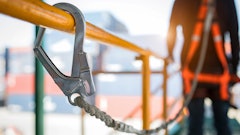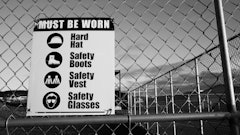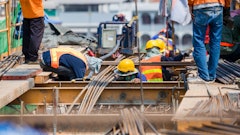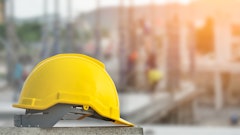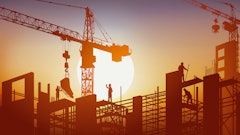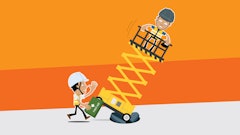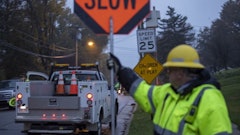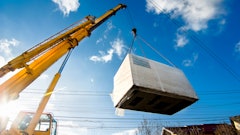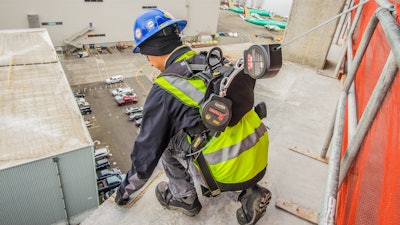
While the construction industry has taken increasing precautions over the years to protect employees from falls, they are still the leading cause of fatal accidents on the jobsite. They also account for a large percentage of injuries. Yet, oftentimes, the industry doesn’t have a clear idea of the extent of fall-related injuries, as they can last for weeks or months — or even prevent a worker from returning to the job at all — and may not be widely reported.
It’s important for construction companies and employees to recognize that the best line of defense against fatalities and injuries isn’t Personal Fall Protection Equipment (PFPE); it’s taking steps to prevent the fall in the first place. When elimination of the risk isn’t possible, knowing how to reduce it is key.
Training and attention to detail are both essential — and they are a matter of commitment on the part of company leadership and the employees themselves.
When to Use Fall Protection
Fall protection is required in three instances: when working from heights, near an edge or on steep surfaces.
Working from heights encompasses a number of circumstances, some of which are less obvious than others. Commonly thought of instances include standing on a mobile elevated work platform (MEWP) such as a scissor lift or boom lift, on a ladder, a roof, temporary stairs or catwalk. Lesser known examples include:
- Working at ground level next to an excavation area
- Construction near or on fragile materials
- Working by an opening in a floor or near a hole in the ground
Per the Occupational Safety and Health Administration (OSHA), fall protection is required when working 6 ft. above the ground on a construction site. When construction is taking place on a roof, for example, it requires a guard rail, which can include a parapet wall high enough to satisfy OSHA guardrail height and strength requirements. This is true no matter how far a worker is from the edge.
Fall protection is also necessary when working on a leading edge. OSHA 1926.751 defines this as “the unprotected side and edge of a floor, roof, or formwork for a floor or other walking/working surface (such as deck), which changes location as additional floor, roof, decking or formwork sections are placed, formed or constructed.” The American National Standards Institute (ANSI) defines a leading edge under A10.32-2012 as the “unprotected side or edge during periods when it is actively or continuously under construction.”
Steep surfaces, including roofing, also require fall protection. Based on the slope of the roof, this may require a guardrail, safety net or warning line systems, or a combination thereof.
Methods of Fall Protection
Protecting employees from falls varies by method, the level of which is determined by the Hierarchy of Controls. It includes several steps.
- Elimination – This is the most effective form of fall protection. It entails removing a worker from a fall hazard entirely or reducing the amount of exposure to a potential fall. It can be achieved by building structural components on the ground and lifting them into place by a crane. Progressively limiting the number of hours employees are in a position they could fall from during a shift is also a manner of elimination.
 It’s important for construction companies and employees to recognize that the best line of defense against fatalities and injuries isn’t PFPE; it’s taking steps to prevent the fall in the first place.Sunbelt Rentals
It’s important for construction companies and employees to recognize that the best line of defense against fatalities and injuries isn’t PFPE; it’s taking steps to prevent the fall in the first place.Sunbelt Rentals- Administrative Controls – While less effective, this method aims to change employee behaviors by way of posting warning signs, writing procedures, training and implementing new rules. There is no change in the exposure to falls with this step in the Hierarchy of Controls, but there is control of the exposure if employees comply.
- PFPE – Implementing a harness/lanyard is the least effective form of fall protection, although still necessary on the construction jobsite. It does not prevent a fall, but rather stops the wearer from reaching the ground in the event of a fall and should never be solely relied upon when working from heights. It is considered an active form of fall protection and is only viable if used properly. Companies need to be sure that employees are trained on how to properly wear and adjust a harness and tie in to either the equipment or structure they are working on.
Make the Most of Training
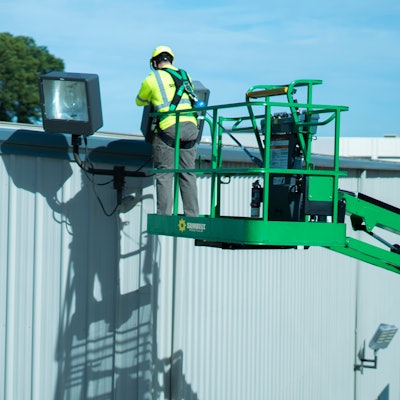 Enlisting employees’ help to implement proper fall protection and gaining their input for correcting unsafe conditions can empower them to consistently do the right thing.Sunbelt Rentals
Enlisting employees’ help to implement proper fall protection and gaining their input for correcting unsafe conditions can empower them to consistently do the right thing.Sunbelt Rentals
Leadership plays a critical role in encouraging employees to not only engage in training (or re-training) as it occurs, but also to put safety best practices to use during every shift. Communication is the foundation of making that happen. Owners and superintendents can actively participate in training with employees, emphasize how important this safety training is, ask questions and urge employees to ask them, as well. They can assure employees that training isn’t punitive or just a simple way to gain a wallet card. Rather, it’s education that is in their best interest.
Keeping an open dialogue in the field is also valuable to gaining buy-in. Leadership should supervise crews in order to both correct unsafe behaviors and encourage safe practices when they see them.
Enlisting employees’ help to implement proper fall protection and gaining their input for correcting unsafe conditions can also empower them to do the right thing — and do it consistently.
Jeff Stachowiak is director of safety training, Sunbelt Rentals.
